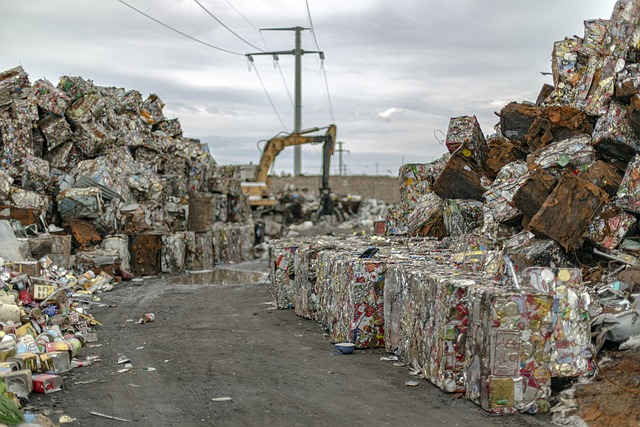
As we move into the future, it is becoming increasingly clear that we need to embrace more sustainable ways of living. One of the areas that has seen significant growth in recent years is green technology innovations, which is aimed at reducing our impact on the environment through innovative and sustainable methods.
The world has seen an enormous shift towards the use of renewable energy sources such as solar, wind and hydro power. These innovations have helped to reduce the amount of greenhouse gases that we produce, thus mitigating the effects of climate change.
Types of Green Technology:
Renewable Energy:
Renewable energy technologies harness the power of natural resources, such as sunlight, wind, and water, to generate clean and sustainable energy. Solar panels convert sunlight into electricity, wind turbines capture the energy from the wind, and hydroelectric power plants utilize the force of flowing water. These technologies provide an alternative to fossil fuels, reducing greenhouse gas emissions and combating climate change.
Energy Efficiency:
Energy-efficient technologies focus on reducing energy consumption while maintaining or even improving functionality. These can range from LED lighting and smart thermostats to energy-efficient appliances and building insulation. By optimizing energy use, these technologies help to conserve resources and lower energy costs.
Sustainable Transportation:
Green transportation technologies aim to reduce emissions and dependence on fossil fuels in the transportation sector. Electric vehicles (EVs), hybrid cars, and hydrogen fuel cell vehicles are examples of clean and energy-efficient alternatives to traditional gasoline-powered vehicles. Additionally, public transportation systems and infrastructure that support walking, cycling, and carpooling help to reduce congestion and air pollution.
Green Building Materials:
Sustainable construction practices focus on using environmentally friendly materials that have a lower environmental impact. These materials might include recycled steel, reclaimed wood, and low VOC (volatile organic compound) paints. Green building techniques also incorporate energy-efficient designs, such as passive heating and cooling systems, green roofs, and efficient insulation.
Waste Management and Recycling:
Green technology innovations play a vital role in waste management by minimizing waste generation and improving recycling processes. Advanced recycling technologies allow for the conversion of waste materials into valuable resources, reducing the reliance on raw materials. Composting and anaerobic digestion processes can turn organic waste into nutrient-rich soil amendments and biogas, respectively.

Precision Agriculture:
Precision agriculture utilizes technology, such as satellite imagery, drones, and sensors, to optimize agricultural practices. By collecting data about soil conditions, moisture levels, and crop health, farmers can make informed decisions to improve resource allocation, reduce the use of fertilizers and pesticides, and increase crop yields. This technology promotes sustainable farming practices and minimizes environmental impact.
Water Conservation:
Water conservation technologies and practices aim to reduce water waste and ensure efficient use of this precious resource. Smart irrigation systems monitor soil moisture levels and weather conditions to deliver the right amount of water only where and when it is needed. Rainwater harvesting systems capture and store rainwater for landscape irrigation and non-potable uses, reducing reliance on freshwater supplies.
Each of these types of green technology innovations offers advanced solutions to address environmental challenges and promote sustainability. By embracing these technologies, we can pave the way for a greener future and create a harmonious balance between human activities and the natural world.
Advantages and Benefits of Green Technology
Green technology offers numerous advantages and benefits that not only combat climate change but also contribute to a more sustainable and livable future. By implementing innovative green technologies across various sectors, we can pave the way for a cleaner, healthier, and more prosperous world.
Environmental Preservation
One of the primary advantages of green technology is its ability to preserve and protect the environment. Through renewable energy sources, sustainable transportation, and waste management practices, green technology innovations minimize pollution, conserves resources, and reduces our carbon footprint.
- Clean Energy: The utilization of renewable energy sources, such as solar, wind, and hydro power, contributes to a significant reduction in greenhouse gas emissions, combatting climate change and improving air quality.
- Reduced Pollution: Green technology promotes sustainable transportation options like electric vehicles and public transport systems, which lead to a decrease in harmful emissions, minimizing air and noise pollution.
- Waste Reduction: Innovative recycling and waste management technologies reduce the amount of waste sent to landfills, preserving natural resources, and preventing pollution of land and water sources.

Economic Growth and Job Creation
Green technology innovations not only offers environmental benefits but also drives economic growth and job creation.
- Market Opportunities: The development and implementation of green technologies create new market opportunities, promoting innovation and driving economic growth.
- Job Creation: The transition to a green economy generates employment opportunities across various sectors, including renewable energy, sustainable transportation, and green building construction.
- Cost Savings: Green technologies often lead to long-term cost savings for individuals, businesses, and governments. For example, energy-efficient practices and technologies reduce energy consumption, resulting in lower utility bills and operational costs.
Health and Well-being
Green technology significantly impacts our health and well-being by improving overall quality of life.
- Clean Air: By reducing emissions and pollutants, green technology helps to improve air quality, reducing respiratory diseases and improving respiratory health.
- Sustainable Agriculture: Organic farming practices promoted by green technology contribute to healthier food options, free from harmful chemicals and pesticides, leading to improved nutritional intake and better overall health.
- Accessible Transportation: Sustainable transportation options, such as public transport and cycling, promote physical activity and reduce traffic congestion, creating healthier and more active communities.
Challenges and Barriers in Green Technology Adoption
While green technology holds immense promise for a sustainable future, its widespread adoption faces several challenges and barriers. Overcoming these hurdles is crucial to ensure that the benefits of green technology are realized on a global scale.
Cost and Affordability:
One of the significant barriers to adopting green technology is the initial cost. For many individuals, businesses, and governments, the upfront investment required for implementing sustainable practices and technologies can be substantial. The high cost of renewable energy systems, electric vehicles, and green building materials can deter potential users from embracing these technologies. However, it is essential to consider the long-term cost savings and environmental benefits that green technology offers.

Infrastructure and Accessibility:
The lack of adequate infrastructure to support green technology can hinder its adoption. For example, the limited availability of charging stations for electric vehicles can discourage potential buyers, as range anxiety becomes a concern. Similarly, the absence of a well-developed renewable energy grid can be a barrier to the widespread use of solar and wind power. Addressing these infrastructure gaps and increasing accessibility to green technologies is crucial for their successful adoption.
Knowledge and Awareness:
A lack of awareness and understanding about green technology can be a significant barrier. Many individuals and businesses may not be familiar with the benefits, costs, and applications of green technology, leading to apprehension and resistance. Educating the public and raising awareness about the positive impact of green technology is essential for overcoming this barrier.
Policy and Regulatory Frameworks:
Inconsistent or inadequate policies and regulations can impede the adoption of green technology. A supportive policy environment that incentivizes and rewards sustainable practices can encourage individuals and businesses to invest in green technology. Governments play a crucial role in establishing clear guidelines, providing financial incentives, and ensuring a level playing field for green technology adoption.
Resistance to Change:
Resistance to change is a common barrier to adopting any new technology or practice. People may be hesitant to switch to greener alternatives due to fear of the unknown, reliance on familiar technologies, or concerns about the performance of green solutions. Overcoming this resistance requires effective communication, showcasing the benefits and success stories of green technology, and addressing any misconceptions or skepticism.
Role of Green Technology in Sustainable Development
Green technology plays a pivotal role in achieving sustainable development by addressing environmental concerns, promoting economic growth, and enhancing social well-being. From renewable energy sources to sustainable agriculture practices, green technology offers innovative solutions that are essential for creating a sustainable future.
- Advancing Renewable Energy:
Renewable energy sources, such as solar, wind, and hydro power, are at the forefront of green technology. These clean sources of energy reduce our dependence on fossil fuels, mitigate climate change, and improve air quality. By investing in renewable energy infrastructure, countries can reduce greenhouse gas emissions, create jobs in the clean energy sector, and achieve energy security.
- Sustainable Transportation:
Green technology has revolutionized the transportation sector by promoting sustainable modes of transportation. Electric vehicles, hybrid cars, and improved public transportation systems reduce carbon emissions, decrease air pollution, and alleviate traffic congestion. By integrating green transportation solutions, cities can create more livable and accessible urban environments.
- Sustainable Construction:
Green technology has transformed the construction industry by promoting sustainable building practices and materials. Energy-efficient designs, green roofs, and the use of recycled materials minimize resource consumption and waste generation. Sustainable buildings not only reduce environmental impact but also provide healthier living and working spaces for occupants.
- Precision Agriculture:
Green technology is vital in ensuring food security while minimizing environmental harm. Precision agriculture techniques, such as remote sensing and data analytics, optimize resource allocation, reduce chemical pesticide usage, and increase crop yields. By adopting sustainable farming practices, including organic farming and agroforestry, we can preserve ecosystems, promote biodiversity, and safeguard food production.
- Waste Management:
Effective waste management is a crucial component of sustainable development, and green technology plays a significant role in addressing this challenge.

Advanced recycling technologies enable the proper disposal and conversion of waste materials into valuable resources. Waste-to-energy processes and composting facilities contribute to reducing landfill waste and minimizing greenhouse gas emissions.
- Water Conservation:
Green technology offers innovative solutions for water conservation, a critical aspect of sustainable development. Water-saving technologies, such as smart irrigation systems and rainwater harvesting, reduce water waste in agriculture and urban settings. Desalination and water purification technologies provide access to clean drinking water in regions facing water scarcity.


